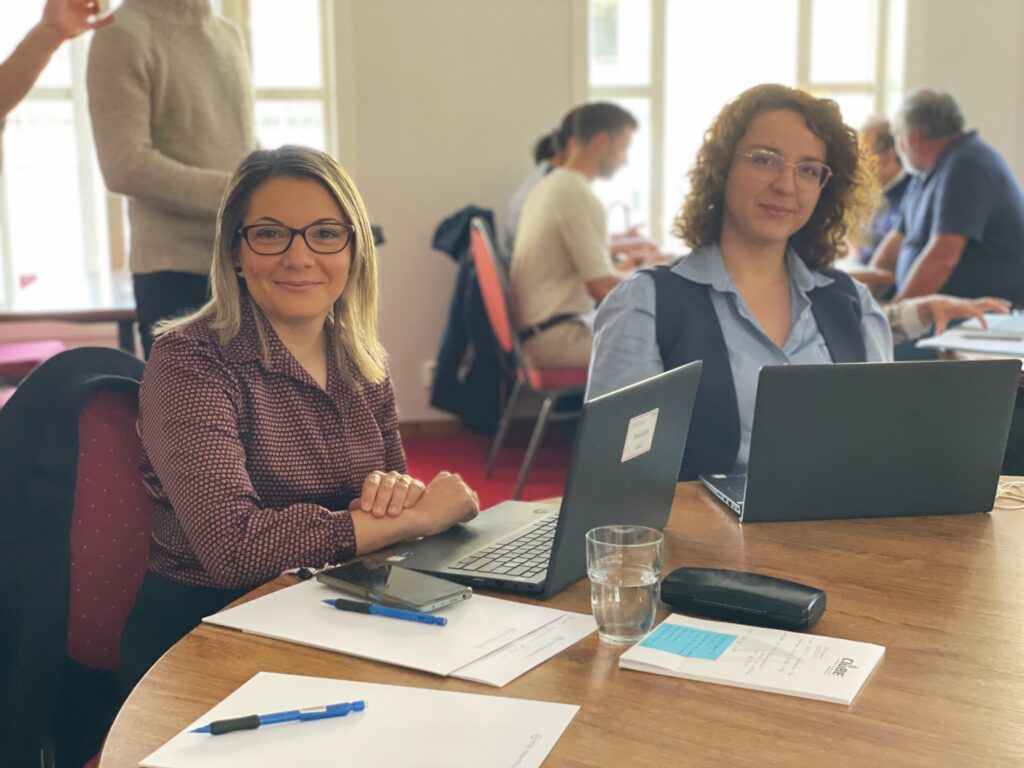“Feasible, sustainable, and profitable”: Rehabilitating former lignite mine marginal lands
In this interview, Theodora Kalea, coordinator of the Greek use case, shares key insights into the potential of the value chain being developed on site by MarginUp!
In Western Macedonia, Greece, MarginUp! is developing an initiative to rehabilitate land degraded by former lignite mining operations through phytoremediation while creating a bio-based value chain. Phytoremediation, essentially, involves the use of plants and associated soil microbes to reduce the concentrations or mitigate the toxic effects of contaminants in the environment. Specifically in this use case, experts chose to plant fast-growing and resilient species such as pseudoacacia trees (black locust) and lavender, accompanied by biodiversity-enhancing species like oak and chestnut trees.
The project aims to use pseudoacacia trees to produce MDF (a wood panel product used in construction and furniture) and lavender to produce essential oils. The circular value chain aims to promote sustainable regional business models that improve soil quality and productivity. To this end, the project has engaged with key stakeholders at local, regional and national levels. In this short interview, Theodora Kalea — use case coordinator and Deputy Head of Bioeconomy & Social Innovation Department at CluBE — shared key aspects of the use case with us, such as its main goals, replication potential, key challenges, and the progress to date.

On the left is Theodora Kalea, and on the right is Archontia Triantafillou, who is a junior project manager at CluBE and a partner at MarginUp!
Since the project started in December 2022, what has been done so far?
Theodora Kalea: We have planted 1500 pseudoacacia trees and 2200 lavender plants to rehabilitate the abandoned former lignite mine, as well as 70 oak and 70 chestnut trees to enhance biodiversity.
In 2025, we started taking wood samples from pseudoacacia trees at the borders of the field. The objective was to measure the properties of the wood and to decide which percentage of it could be used in the MDF production tests.
What were the biggest challenges in your use case?
The biggest challenge so far was to get a logging permit for pseudoacacia trees from a neighbouring area. Weather conditions are also always a challenge.
Which interest groups have you been in dialogue with over the last two years and how have you and they benefited from this?
We have worked with representatives of the Regional Development Fund, policy makers from the region of Western Macedonia, municipalities, the Geotechnical Chamber, the Power Plant company, regional SMEs, associations, consulting companies, people working in the regional transition and companies that exploited former lignite mines.
We were able to analyse the value chain, examine potential problems, and find solutions together. We also discussed how replication could be achieved, what kind of support would be needed, the advantages, and the existing gaps.
In which areas of your development do you see the greatest replication potential and why?
There is significant replication potential in abandoned and transitioning European lignite mines, as well as in areas across Europe and internationally with comparable marginality attributes and climate conditions.
For example, in Europe only, there are 42 coal regions spread across 12 EU member states. The greatest replication potential lies in three key areas: (1) plant selection, as the chosen species can be adapted to similar degraded lands; (2) the bio-based products produced, which can be scaled up and diversified for different markets; and (3) the value chains created, as they offer economic opportunities that can be replicated in other regions.
What are the next steps in your use case?
To log the pseudoacacia trees and conduct the first tests on the MDF produced using a percentage of pseudoacacia wood biomass mixed with wood from other tree species.
What is the goal at the end of the project in 2026?
We need to have analysed all aspects of the value chain, such as the economic feasibility, existing gaps, and all supporting mechanisms. This will allow us to demonstrate that our proposed method for rehabilitating former lignite mine marginal lands is feasible, sustainable, and profitable and can be replicated in many other regions.
What challenges do you see in the long term?
The Western Macedonia region is a region in transition. This means there will be many opportunities, but also potential obstacles. Our goal in the project is to help the region discover new ways of developing value chains and establishing new partnerships to navigate the transition, creating new jobs and a sustainable future. However, obstacles such as established practices and mindsets, as well as bureaucratic issues, still need to be overcome.
